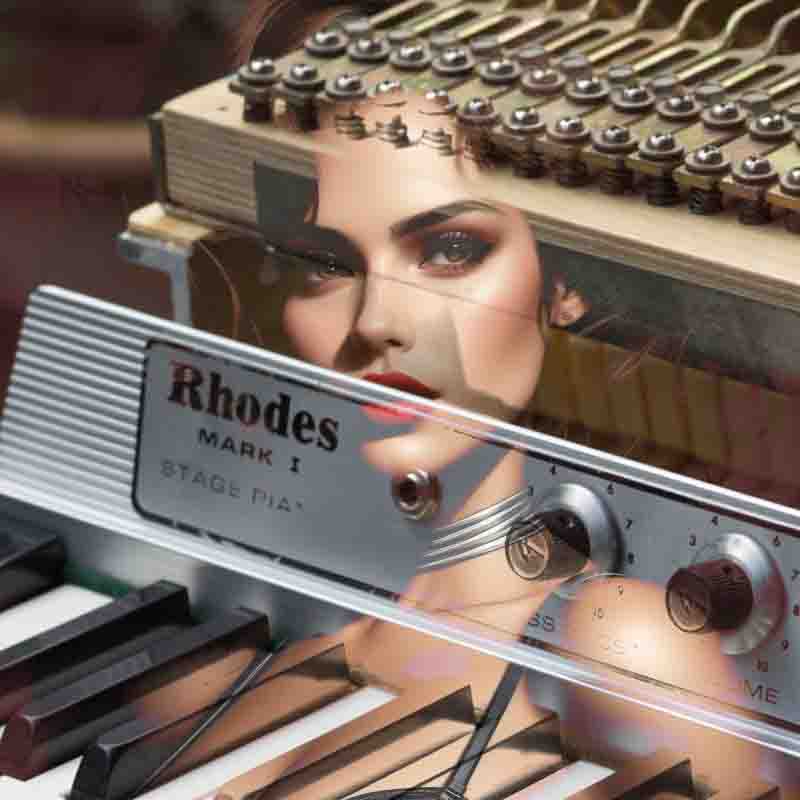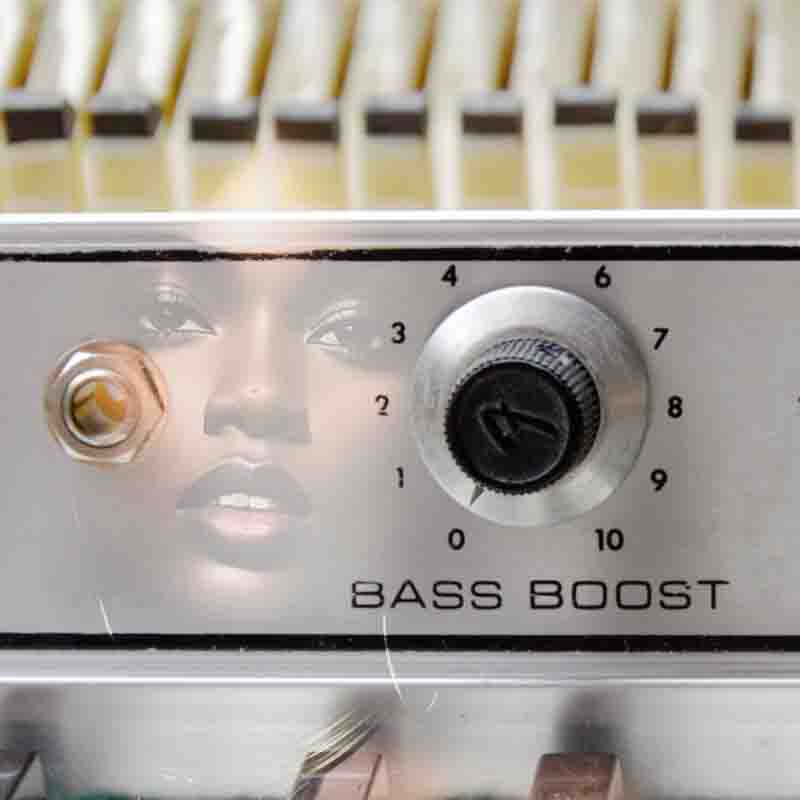Fender Rhodes: A Keyboard Revolution
The Fender Rhodes is a flagship electromechanical key instrument with a prolific history and a profound influence on the music industry. Originating in the early 1960s, it was crafted by Harold Rhodes and subsequently acquired by Fender, evolving into an iconic piece of musical technology.

The Fender Rhodes, a venerable electric piano with a rich history dating back to the ingenious designs of Harold Rhodes and subsequent acquisition by Fender in the 1960s, offers an impressive representation of the evolution of keyboard instruments.
Distinguished by its ingenious design, the Fender Rhodes employs a complex mechanism involving hammers and tines, producing a distinct and warm electric piano sound.
Its unique tonal character, with a bell-like quality, has left an indelible mark on various musical genres, particularly jazz, funk, and soul.
This keyboard instrument has become synonymous with a vintage, sought-after sound that continues to be revered by musicians and enthusiasts alike.
Its versatility and expressive capabilities have allowed it to traverse musical terrain, making it a fixture in both studio recordings and live performances.
The Fender Rhodes has cemented its status as a premium instrument and contributed to the musical scape of innumerable musical compositions.
Its timeless popularity shows that it is as relevant as ever in contemporary music, with its characteristic signature sounds being applied in a range of stylistic directions.
The Fender Rhodes utilizes a unique design incorporating hammers and tines to produce its distinctive warm and bell-like electric piano sound. It has become a sought-after classic, known for its expressive tonal qualities and significant impact on the history of keyboard instruments.
Fender Rhodes Timeline
The history of the Fender Rhodes is a captivating journey that begins with the innovative spirit of Harold Rhodes.
In the early 1940s, Rhodes developed the first prototype of the Rhodes piano as a therapeutic tool for injured soldiers during World War II.
In 1959, Fender recognized the potential of this revolutionary instrument and acquired its manufacturing and marketing rights.
This marked the birth of the Fender Rhodes brand.
| Year | Milestone |
|---|---|
| 1942 | Harold Rhodes develops the first prototype of the Rhodes piano during World War II to aid injured soldiers in rehabilitation. |
| 1959 | Fender acquires the manufacturing and marketing rights for the Rhodes piano, leading to the creation of the Fender Rhodes brand. |
| 1960 | The Fender Rhodes Suitcase Piano is introduced, featuring a portable design with integrated speakers. |
| 1965 | The Fender Rhodes Mark I is released, incorporating a new design with tines instead of strings for a distinctive sound. |
| 1969 | The Fender Rhodes Mark II is introduced, known for improvements in amplification and tonal clarity. |
| 1975 | The Fender Rhodes Mark III is released, featuring further design enhancements and refinements. |
| 1980s | Production of Fender Rhodes pianos declines as digital keyboards gain popularity. |
| 1997 | Harold Rhodes regains control of the Rhodes brand, leading to the creation of the Rhodes Music Corporation. |
| 2007 | The Rhodes Mark 7, a digital version, is introduced, attempting to revive the brand's presence in the market. |
| 2012 | The Rhodes Mark 7 is discontinued, and the company shifts focus to producing high-quality accessories for vintage Rhodes pianos. |
| Present | The Fender Rhodes remains an iconic instrument, cherished for its vintage appeal, unique sound, and impact on various music genres. |
This timeline highlights key events in the history of the Fender Rhodes, from its inception in the 1940s to its evolution under Fender, the introduction of iconic models, and its enduring legacy in the contemporary music landscape.
Evolution of Fender Rhodes Models

Understanding the evolution of Fender Rhodes models, particularly the Mark I, Mark II, and Mark III, is crucial for anyone seeking to appreciate its unique contribution to music.
Mark I - The Bell-Like Pioneer
The Mark I Fender Rhodes, produced from 1965 to 1975, marked the pioneering phase of this legendary instrument.
Its defining characteristic was the use of tines instead of traditional strings, resulting in a bell-like sound that became its sonic signature.
Early models featured wood keys, transitioning later to more durable plastic.
A significant evolution was the shift from passive to active electronics, introducing an active preamp that not only boosted the signal but also enhanced the overall tonal quality.
The Mark I was offered in both Stage and Suitcase versions, the latter featuring integrated speakers for enhanced portability.
Mark II - Refined Sound and Design
Following the success of the Mark I, the Mark II, produced from 1975 to 1984, represented a refinement in both sound and design.
Notable improvements included a graduated hammer action, providing a more authentic piano feel.
The tonal palette expanded with additional tone controls, allowing musicians greater flexibility in shaping their sound.
Changes in tine design influenced the instrument's overall tonal characteristics.
The Mark II also saw improvements in amplification, introducing a built-in preamp and a redesigned power amplifier for a cleaner, more defined sound.
Mark III - Sleek Aesthetics and Further Refinements
The Mark III, produced from 1980 to 1984, continued the evolutionary trajectory of the Fender Rhodes.
This model featured sleeker aesthetics with a modernized appearance and redesigned logos.
One notable design change was the integration of amplifier controls on the cheek block, providing more convenient access for the musician.
The Mark III retained the shorter tines introduced in the Mark II but incorporated some design changes for tonal variations.
Further improvements in electronics contributed to the overall reliability and consistency of the instrument.
The Signature Sound of Fender Rhodes
Bell-Like Tones
The hallmark of the Fender Rhodes is its distinctive bell-like tones.
The Fender Rhodes' ability to produce warm, resonant tones with a percussive edge sets it apart in the realm of electric pianos.
Countless iconic recordings, including those of Herbie Hancock and Stevie Wonder, showcase the instrument's ability to add depth and character to musical compositions.
Tines and Tonewheel System
At the core of the Fender Rhodes' sonic identity lies its ingenious tonewheel system and the use of tines.
The tines, small metal rods responsible for producing sound, are struck by hammers when a key is pressed, generating the characteristic chiming tones.
The tonewheel system, a rotating disc with various teeth, interacts with electromagnetic pickups to produce different harmonics and nuances in the sound.
This combination of tines and tonewheel system contributes to the instrument's dynamic and expressive sonic range.
Collectibility and Rarity of Fender Rhodes
Limited Editions and Rare Models
The allure of Fender Rhodes extends beyond its intrinsic musical qualities to the realm of collectibles.
Limited editions and rare models, each with its unique features, contribute to the instrument's desirability.
The Fender Rhodes Celeste, distinguished by its celestial blue finish, stands as a rare find sought after by collectors.
Sparkletop series, including the Silver Sparkle Top and Red Sparkle Top, showcase the instrument in visually striking variations, adding an extra layer of appeal.
The Janus, with its dual-keyboard design, represents Fender Rhodes' experimentation and is particularly rare and collectible.
Fender Rhodes in Contemporary Music
While rooted in the past, the Fender Rhodes continues to exert a profound influence on contemporary music.
Musicians across diverse styles, from jazz to R&B and indie, embrace the Fender Rhodes for its unique sonic qualities, adding a touch of vintage authenticity to modern compositions.
Fender Rhodes Playing Experience
What truly sets the Fender Rhodes apart is the playing experience it offers.
The weighted keys, responsive touch, and the ability to convey nuanced emotions make it a joy for musicians to interact with.
The tactile feedback from the keys, coupled with the instrument's expressive capabilities, allows players to infuse their music with a level of emotion that is often hard to achieve with other keyboards.
Fender Rhodes Keywords and Terms
-
Electro-mechanical keyboard: Refers to a type of keyboard instrument that combines mechanical elements with electronic components for sound generation.
-
Harold Rhodes: The creator of the Rhodes piano, Harold Rhodes was an American inventor and educator known for his contributions to keyboard instrument design.
-
Vintage: Indicates the classic and nostalgic quality associated with the Fender Rhodes, reflecting its production during earlier decades.
-
Tines: Metal rods in the Fender Rhodes that vibrate when struck by hammers, generating the instrument's characteristic sound.
-
Bell-like sound: Describes the unique, resonant quality of the Fender Rhodes electric piano, reminiscent of the sound produced by bells.
The Fender Rhodes has undergone a series of evolutionary steps, each marked by improvements and refinements. The transition from the Mark I to the Mark II, for instance, introduced changes in amplification, resulting in a clearer and more defined sound.
Resonate in Style: The Fender Rhodes Experience
From the groundbreaking innovations of the Mark I to the refined qualities of the Mark II and Mark III, each model contributes to the instrument's enduring legacy.
The signature sound, collectible allure, and timeless relevance in contemporary music make the Fender Rhodes an instrument worth exploring and cherishing.
The Fender Rhodes: FAQ
Are you curious about music, art, technology, fashion, lifestyle, and beer?
If so, then you need to subscribe to the free Likewolf newsletter.
100% privacy. When you sign up, we'll keep you posted.
Musical Expression
Innovative and Ambitious Sound
